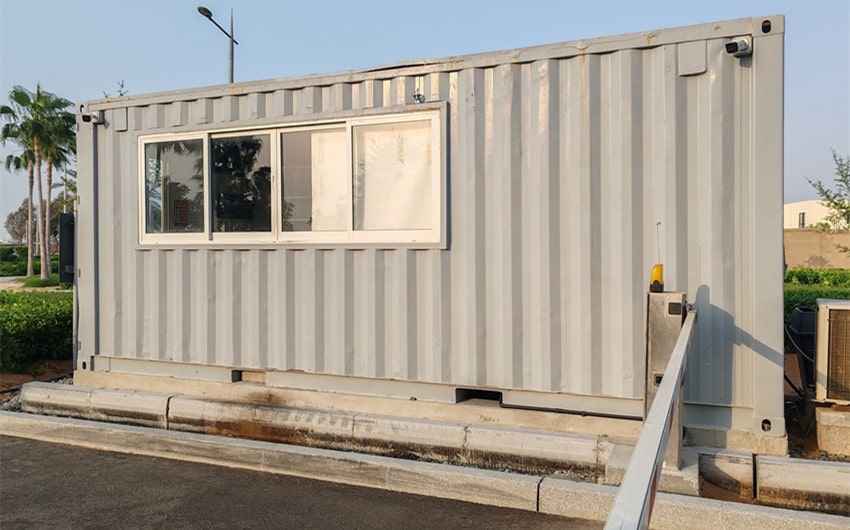Container Homes vs. Tiny Houses: A Comparative Look at Modular Living, Space Efficiency, and Cost
Alternative housing isn’t just a buzzword anymore. It’s a serious, practical solution for people who want to own their space without taking on a lifetime of debt. Two of the most popular options in this category? Shipping container homes and tiny houses. While they might appeal to the same crowd, minimalists, first-time buyers, or off-grid dreamers, they offer very different living experiences.
This isn’t about which one is “better.” It’s about finding the right fit for your needs, your land, your budget, and your lifestyle.
Quick Comparison Summary
| Feature | Container Home | Tiny House |
| Base Cost (build) | £25,000–£60,000 | £30,000–£80,000 |
| Size Range | 160–320 sq ft | 100–400 sq ft |
| Frame Material | Steel (Corten) | Timber or trailer-based |
| Customisation | Medium–High | High |
| Insulation Needs | High (steel shell) | Depends on structure |
| Mobility | Low–Medium | High |
| Lifespan | 25–50 years | 10–30 years |
| Aesthetic | Industrial/Modern | Rustic/Cottage/Quirky |
What Is a Container Home?
A container home starts life as a shipping box. Typically made from heavy-duty Corten steel, these units come in two standard sizes: 20ft (~160 sq ft) and 40ft (~320 sq ft). Some builds use just one. Others stack, cut, or combine multiple containers into larger, modular homes.
They’re increasingly used in:
• Urban infill housing
• Eco-conscious building projects
• Short-term rental units
• Backyard studios and offices
The appeal is clear: you get a sturdy, ready-made frame that can withstand extreme weather and wear. But modifying steel isn’t cheap or simple. You’ll need tools, expertise, or a conversion service to make it livable.
What Is a Tiny House?
Tiny houses are purpose-built small dwellings, usually under 400 square feet. Most are wood-framed and often mounted on trailers to make them mobile. Others are built on small foundations or skids for semi-permanent placement.
Tiny homes rose to popularity as part of the minimalist movement and have become a symbol of intentional living. They’re often customised from scratch and prioritise clever use of space, lightweight materials, and aesthetic flair.
People choose them for a variety of reasons:
• Downsizing
• Avoiding mortgages
• Mobility and travel
• Environmental simplicity
Space Efficiency: Which One Maximises Use Better?
Layout Flexibility
Tiny houses tend to be hyper-optimised. Every inch counts. Think staircases that double as storage drawers, fold-down tables, and hidden compartments.
Containers, by comparison, start with a box. They’re rectangular, rigid, and uniform. That makes things like plumbing and furniture installation more straightforward, but limits some design creativity unless you bring in a pro.
Ceiling Height and Storage
Containers usually come in two heights: standard (8’6″) and high cube (9’6″). That extra foot can make a huge difference in headroom, airflow, and the sense of space. Tiny homes, especially trailer-based ones, are often restricted to under 13.5 feet total for road clearance, limiting usable ceiling height.
Worth noting: Containers may feel more open due to their proportions, even if square footage is similar.
Cost Comparison: Which Is More Affordable?
Upfront Build Costs
Containers might seem cheaper at first, and sometimes they are. But modifying steel isn’t a small job. You’ll need to cut out windows, weld framing, install insulation, and manage condensation issues. Those costs add up fast.
Tiny homes may have more material costs initially (timber, roofing, cladding), but they’re easier to build with basic carpentry skills. For DIYers, tiny homes are often the more manageable route.
Long-Term Ownership
Steel is hard-wearing. A container won’t rot, split, or attract termites. Timber-based tiny homes are better insulated by default but can suffer from damp, warping, or general wear depending on upkeep.
Utilities & Systems
Tiny homes on wheels often include off-grid tech: solar panels, composting toilets, greywater systems. Containers can also be made off-grid but usually require a more permanent setup with plumbing and electrical connections.
In terms of resale, containers tend to retain structural value longer, especially if they’re high-spec conversions.
Sustainability and Environmental Impact
Container Homes
• Reuse of shipping containers = upcycling
• But: retrofitting is energy-intensive (cutting, insulating, modifying steel)
• Can be solar-powered and rainwater-fed like any modular build
Tiny Houses
• Often built from renewable materials like sustainably sourced timber
• Smaller carbon footprint overall due to lightweight structure
• Commonly paired with low-impact systems like compost toilets and solar batteries
Both are arguably more sustainable than traditional homes, but tiny houses have a slight edge in terms of embodied carbon and renewability.
Build Time & Construction Process
| Step | Container Home | Tiny House |
| Shell | Pre-existing | Built from scratch |
| Interior Fit | Custom | Custom |
| Insulation | Requires more work | Typically simpler |
| Total Time | 2–4 months | 3–6 months |
If you’re hiring a contractor, build time may not vary much. For DIY projects, tiny houses may feel more accessible due to the familiarity of materials and tools.
Legal Considerations: Planning, Zoning & Mobility
Planning Permission
Tiny houses on wheels may be classified as caravans in the UK, depending on usage and location. That can mean fewer planning hurdles.
Container homes, on the other hand, are usually seen as permanent structures and may need full planning approval, even if you’re placing them on your own land.
Placement and Land Use
• Containers work best on private or rural land where placement is easier
• Tiny homes can sometimes be placed in parks, eco-villages, or even hitched up and moved seasonally
In urban areas, both options will require navigating zoning laws, building codes, and potential neighbor objections.
Who Should Choose What?
A Container Home Might Be Best If:
• You want something semi-permanent or permanent
• You value durability and security
• You’re looking for a modular home that could grow over time
• You have land and want to invest in something that holds resale value
A Tiny House Might Be Best If:
• You want to move around or travel with your home
• You’re on board with DIY building or want creative freedom
• You prefer a warm, homey aesthetic over industrial style
• You’re living a minimalist lifestyle and don’t mind tight quarters
Final Verdict: Container vs. Tiny Home – Which One Wins?
It depends on what “winning” means for you.
• Container homes are a better fit for fixed locations, durability, and modular flexibility.
• Tiny houses win on mobility, style, and DIY accessibility.
Both offer real solutions to rising housing costs and a desire to live smaller and smarter. But they’re not interchangeable. Think carefully about how (and where) you plan to live.
Bonus Tip: In the UK, if you’re looking for structurally sound container shells that are already modified or ready for build-outs, suppliers like Universal Containers carry both new and used options that save time and hassle.
FAQs
Can I tow a container home like a tiny house?
Not easily. Containers are heavy and require a crane or lorry to relocate. Tiny homes on trailers are designed for towing.
Which is more energy-efficient?
Tiny homes typically have better natural insulation due to wood construction. However, containers can be highly efficient once properly insulated.
Do both need planning permission?
Yes, in most cases. But tiny homes on wheels may be subject to different regulations depending on classification.
Can I live in either full-time?
Yes. Both can be outfitted with full utilities and liveable amenities. Just make sure your local laws support residential use.







